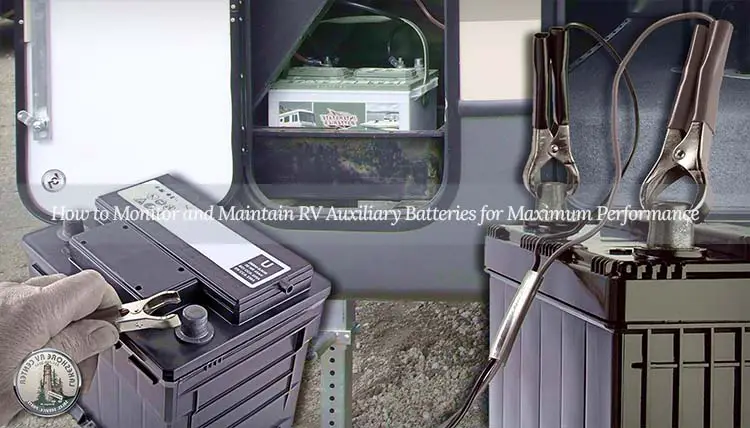The reserve capacity of your car battery plays a significant role in its performance and lifespan. But what exactly does “reserve capacity” mean? In short, it refers to the number of minutes your battery can deliver a minimum amount of power in case your car’s electrical system experiences high demand. By learning how to calculate your car battery’s reserve capacity, you can better understand its true capabilities and determine if it’s time for a replacement.
In this post, we’ll explain the simple formula for figuring out this important metric. You’ll learn what amp hour rating to look for and how to multiply it to get the reserve capacity value in minutes. With this knowledge, you’ll stay on top of your battery’s health.

What is Reserve Capacity?
Reserve capacity refers to the number of minutes a lead-acid car battery can deliver 25 amps while maintaining a 10.5 volts or higher voltage at 80°F. It measures how long the battery can continue to operate essential electrical accessories in your car if the charging system fails.
How Does Reserve Capacity Relate to Battery Life and Performance?
The reserve capacity indicates the battery’s ability to withstand high electrical loads without completely discharging. Batteries with higher reserve capacities can operate critical systems like headlights, power windows, and ignition for a more extended period if your alternator stops working correctly.
Reserve capacity is related to a car battery’s overall life and performance. As a battery ages, its reserve capacity will gradually decrease due to sulfate buildup on the lead plates inside. An old battery with a lower reserve capacity will have a more challenging time starting your engine and powering electrical components.
Typical Reserve Capacity Ratings
Most car batteries have reserve capacities rated between 80-160 minutes. A higher number indicates an extended capability to supply adequate current when needed. For example, a battery rated at 120 reserve capacity minutes could deliver 25 amps for 120 minutes before dropping below 10.5 volts.
See Also: How long does a car battery last: Unlocking the mystery
Steps to Calculate a Car Battery’s Reserve Capacity
What You Need
To calculate your car battery’s reserve capacity, you’ll need a multimeter tool to test the amp hour rating. A multimeter can measure electrical continuity, resistance, voltage, and amperage. You can purchase an inexpensive one at any auto parts store or online retailer.
Determine the Amp Hour Rating
The amp hour (Ah) rating is located on the battery label or in the product specifications. It indicates how many amps a battery can deliver over 20 hours while maintaining a voltage above 10.5 volts.
For example, a 65Ah battery can continuously deliver 3.25 amps for 20 hours. Refer to the battery specifications to locate this number.
Use the Reserve Capacity Formula
Once you have the Ah rating, multiply it by the discharge load of 25 amps to get the reserve capacity in minutes. The formula is:
Reserve capacity (minutes) = Amp hour rating x Discharge load
Calculate an Example
Let’s say we have a car battery with a 75Ah rating. Using the formula:
Reserve capacity = 75Ah x 25 amps Reserve capacity = 1875 minutes or 31 hours
So, this battery’s reserve capacity is 31 hours, meaning it can deliver 25 amps for 31 hours while maintaining adequate voltage.
Factors That Affect a Car Battery’s Reserve Capacity
Reserve capacity, the ability of a car battery to provide consistent power in emergencies, is influenced by various factors. Understanding these factors is crucial for maintaining optimal battery performance.
1. Temperature: The Hot and Cold Reality
Hot Weather: In scorching heat, a battery’s chemical reactions occur more rapidly. This might seem beneficial, but it can lead to increased water evaporation, which reduces the battery’s lifespan. Moreover, high temperatures can cause the plates inside the battery to corrode, reducing reserve capacity.
Cold Weather: Cold weather, on the other hand, can slow down a battery’s chemical reactions, making it less effective at delivering power. In extreme cold, the battery’s reserve capacity can significantly drop. This is why car batteries often struggle on cold winter mornings.
2. Battery Age and Wear
As car batteries age, their reserve capacity tends to decline. The chemical reactions that generate electrical energy become less efficient. Additionally, physical wear and tear on the battery’s plates can reduce the capacity to hold a charge. Regular maintenance and timely battery replacement are essential to combat this decline.
3. Electrical Loads and Demands
The reserve capacity of a battery can be significantly affected by the electrical loads placed on it. Power-hungry accessories like high-intensity lights, sound systems, or in-car entertainment can drain the battery faster. When these accessories are used without the engine running, they consume the reserve capacity and may lead to a dead battery if not managed wisely.
4. Battery Maintenance Best Practices
Proper battery maintenance is essential for preserving reserve capacity:
Regular Inspection: Periodically inspect the battery for signs of damage, corrosion, and leaks.
Charging: Ensure your battery is consistently charged. Extended periods of disuse can lead to a depleted reserve capacity.
Clean Terminals: Clean the battery terminals and connections to maintain proper electrical flow.
Keep It Secure: Ensure the battery is securely fastened to prevent vibration damage.
Avoid Over-Discharging: Minimize running accessories to prevent deep discharges when the engine isn’t running.
Benefits of Accurate Reserve Capacity Knowledge
Understanding and calculating the reserve capacity of your car battery offers numerous advantages, ultimately enhancing your overall vehicle maintenance and providing both cost savings and peace of mind.
1. Improved Vehicle Maintenance
Preventing Unplanned Breakdowns: Accurate knowledge of your car battery’s reserve capacity helps you anticipate when it might fail to deliver power. This awareness allows you to replace the battery before it leaves you stranded, saving you from the inconvenience of unexpected breakdowns.
Optimizing Battery Life: When you know your battery’s reserve capacity, you can better manage its use. Avoiding deep discharges and keeping the reserve capacity within a healthy range can significantly extend the battery’s lifespan.
Timely Replacement: Regularly monitoring your battery’s reserve capacity lets you plan for a replacement when it declines. This proactive approach can prevent issues caused by an aging or worn-out battery.
2. Cost Savings
Avoiding Emergency Expenses: With knowledge of your battery’s reserve capacity, you reduce the risk of being stuck in an emergency with a dead battery. You’re less likely to require costly roadside assistance or towing services.
Maximizing Battery Investment: By extending the life of your battery through proper maintenance and reserve capacity awareness, you save money on purchasing a new battery prematurely.
Reduced Repair Costs: An operational battery with a known reserve capacity is less likely to strain the vehicle’s charging system, potentially saving you from expensive alternator or electrical system repairs.
3. Peace of Mind
Reliability in Emergencies: When you’re aware of your battery’s reserve capacity, you can drive confidently, knowing that it can power essential vehicle functions during unforeseen situations, like being stranded in a remote area or during power outages.
Less Stress: Knowing you’ve taken proactive steps to ensure your battery’s reliability can significantly reduce the stress of unexpected battery failures.
FAQS
How do I find the reserve capacity rating on my car battery?
The reserve capacity rating is typically displayed on the battery label. Look for the “RC” followed by a number in minutes, such as “RC 90.”
Does the reserve capacity rating vary for different car batteries?
Yes, the reserve capacity rating varies between different car batteries. It depends on the battery’s size, type, and manufacturer. Some batteries have higher RC ratings than others, offering longer-lasting power.
Can I calculate reserve capacity on my own, and how is it done?
Yes, you can calculate reserve capacity. You’ll need the battery’s amp-hour (Ah) rating and the electrical load in amps (A) to do so. Divide the Ah by the A to get the RC in hours.
Can reserve capacity be improved through maintenance?
Reserve capacity isn’t easily improved through maintenance, but correctly maintaining your car battery can help preserve its existing capacity. Preventing deep discharges and keeping the battery charged will help.
How often should I check my car battery’s reserve capacity?
It’s a good practice to check your battery’s reserve capacity periodically, perhaps during regular maintenance or before long trips. Battery performance naturally declines with age, so monitoring it is wise.
What happens if I exceed the reserve capacity of my battery?
Exceeding the reserve capacity can lead to deep discharging, which harms the battery. It can significantly reduce its lifespan and overall performance.
What should I do if my battery’s reserve capacity is lower than expected?
If your battery’s reserve capacity is consistently lower than expected, it may be a sign that it is deteriorating. In such cases, consider replacing the battery to ensure reliability.
Can reserve capacity be used to power any electrical device in my car?
In emergency situations, reserve capacity is primarily meant to maintain essential vehicle functions, like lights and engine control systems. It’s not intended for extended use with high-power accessories.
Are there any maintenance tips to improve reserve capacity?
To maintain reserve capacity, focus on overall battery maintenance. Keep the battery charged, avoid deep discharges, and ensure the terminals and connections are clean and secure. These practices can help maintain optimal reserve capacity.
Conclusion
So, understanding how to calculate your car battery’s reserve capacity is your secret weapon for peace of mind and cost savings. This small but powerful metric empowers you to take charge of your battery’s performance, prevent unexpected breakdowns, and maximize lifespan. Whether you’re a road warrior or an occasional driver, knowing your battery’s reserve capacity ensures you’re always in the driver’s seat, ready for the journey ahead. So, keep an eye on your battery, stay proactive, and enjoy the confidence of a well-prepared vehicle.
You May Also Like:



